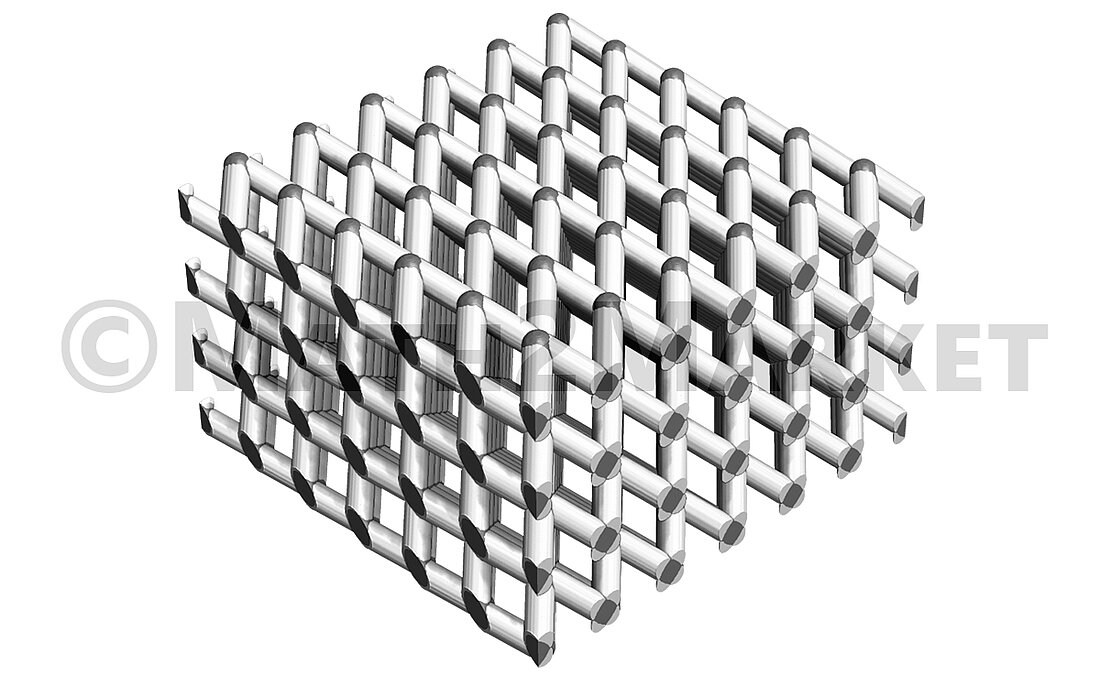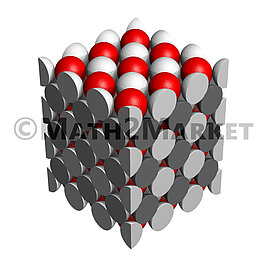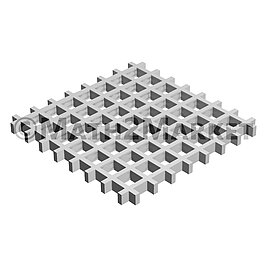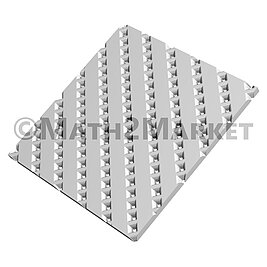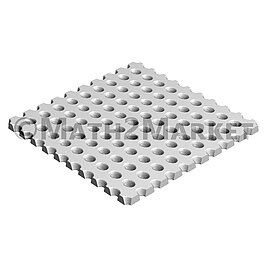Modeling Gratings, Grids & Regular Structures
GridGeo
The GridGeo module models periodic materials (patterns), such as regular configurations of cylinders, spheres, arbitrary objects, and drill-holes. These drill-holes are elliptical, rectangular, change diameter with depth, or have a linear or curved gradient.
The format of these geometric models is 3-dimensional images, like µCT-images after the segmentation, or an analytic description (*.gad, GeoDict analytic data).
By changing the parameters underlying the model, new material structures are designed and their material properties are computed. New designs and existing products are compared and performance is optimized.
GridGeo realistically models the 3D structure of any regular material, such as dense regular sphere packs in BCC grid (Body-Centered Cubic).
The repeating grid unit-cell might be any combination of basic objects, like spheres, cylinders, boxes and other objects. GridGeo also models the 3D structures of perforated foils with variable holes’ shape.
- The GeoDict Base package is needed for basic functionality.
- ExportGeo-CAD: Export of 3D structures modeled with GridGeo as surface triangulation (*.slt) for CAD programs
- ExportGeo-Abaqus und ExportGeo-Fluent: Export of 3D structures modeled with GridGeo as simulations with Fluent / Abaqus
- After modeling a regular structure or a perforated foil, the material properties can be computed from the 3D models using the GeDict modules for Simulation & Prediction
